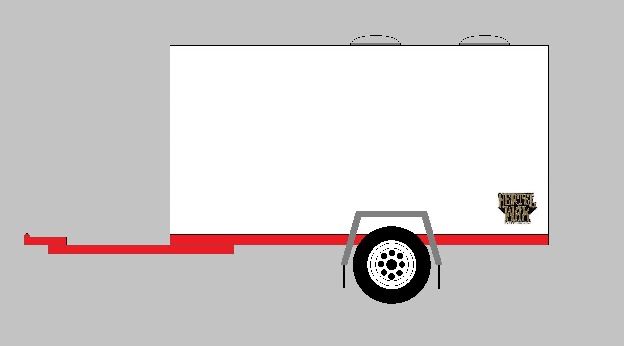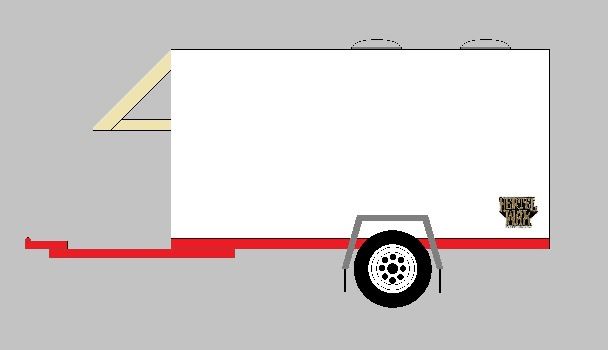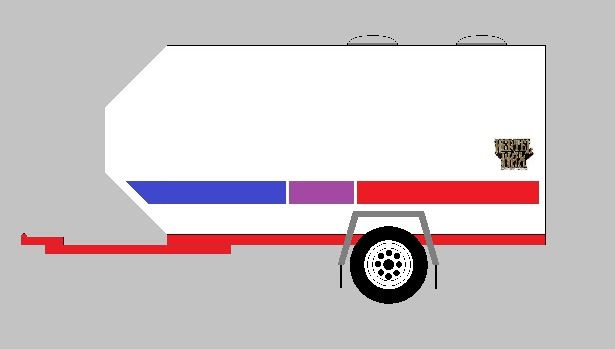
After taking the camper out for it's maiden voyage last weekend, I decided that it was time to go back to the drawing board, and make some design revisions:

The problem with the current micro camper design, is that the front end is simply too blunt, too boxy. With this design, the Yaris averaged only 26.12 mpg over my 340 mile trip last weekend. Which isn't particularly "bad", given that a great many campers (and their towing units) fare far worse. But, I thought that I could do better.

So, I added a temporary "air deflector" to the micro camper last weekend, which improved fuel economy to 29.45 mpg. I used scrap wood (and paint- thus, the tan hue of the air deflector) that I had left over from the camper build, so building the air deflector was sort of like like installing free money onto the camper shell...!
Now, the only problem is that the fix is, well... ugly. Fugly, actually. If I can be blunt. Again, no pun intended.

The permanent fix is going to be an enclosed air deflector box, that can double as (much needed) storage space. The cost...? About $110.00, broken down as such:
- (2) sheets of 5/8" BC plywood + $33 each, for a total of $66.
- (2) 2x4's, at about $3 each, for a total of $6. And,
- Another gallon of white exterior latex, which will cost about $38.
Compare that to the black "job box" that I was going to buy for the camper, which would have been about $130 at Home Depot. The takeaway is that I'll save $20, while improving my fuel efficiency by about 13%.

This schematic shows how the interior box design will look. A hinge-up door will allow snow and rain to fall off of the top of the box (or to be blown away as the car is moving, given that the flip-up door will also double as the air deflector), while allowing about six cubic feet of usable storage space inside.
Next week: My first winter camping trip...! I can't wait...!

